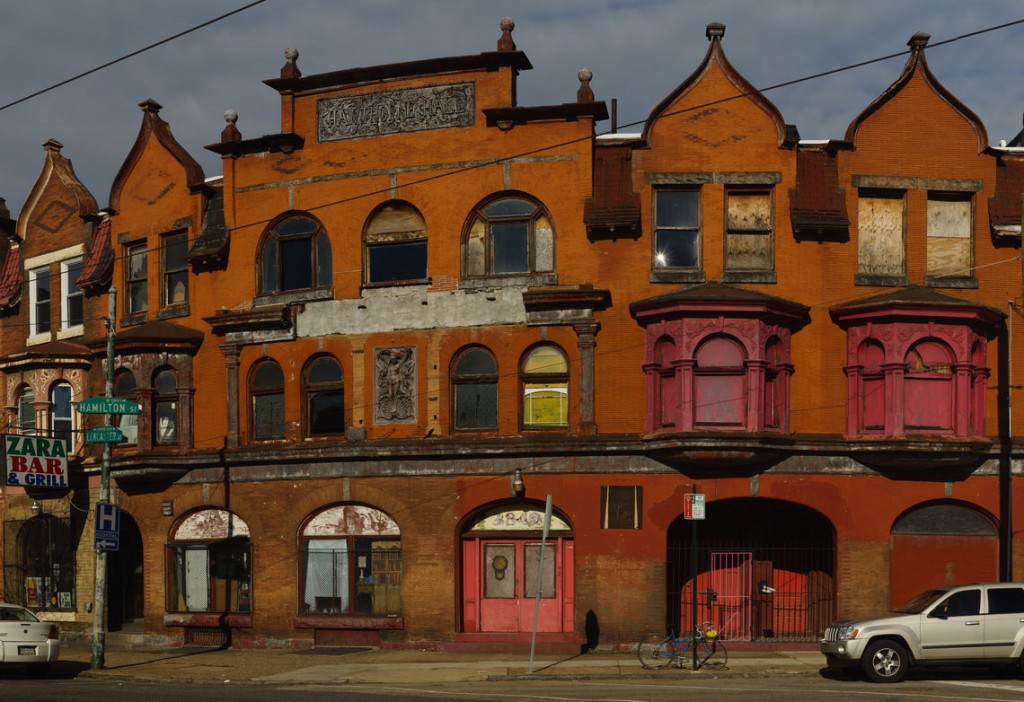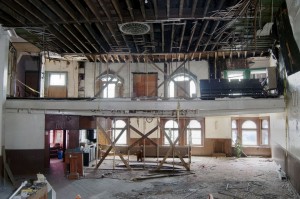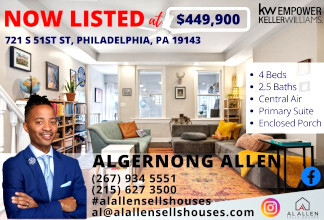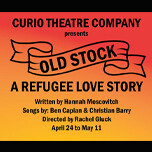
Hawthorne Hall (Photo from grayareaphilly.org)
Down every street, and around every corner, we see Philadelphia’s history chronicled in the old brick roads, the abandoned trolley tracks, and every lot overrun by foliage.
Most of all, we see the city’s history in the timeworn foundations of its older buildings. Be it the imposing Provident Mutual Life Insurance building or the grandiose Divine Lorraine Hotel, Philadelphia’s antiquity is forever sealed in their unique brickwork and beguiling design.
But how we preserve the architecture of that history has become uninspired, if not non-existent. Instead, Philly’s historic buildings are bulldozed to make way for shopping centers and luxurious townhouses. Or they’re left abandoned—nothing more than waning icons relegated to the pronoun of “I wonder what that used to be.”
That’s where GRAY AREA comes in. Supported by the Pew Center for Arts & Heritage, GRAY AREA is an experimental project launched by the University of the Arts and DesignPhiladelphia of the Center for Architecture that looks at “historic preservation in the modern city.” Currently in its third phase, GRAY AREA aims to engage both design and development experts and the public at large in envisaging creative ways to maintain and repurpose the city’s older buildings so they’re moments of revitalization in their communities.
As part of its third phase, known as GRAY AREA 3, a multi-disciplinary cohort of experts and community partners spent most of last year studying two historic buildings: Hawthorne Hall (3849 Lancaster Avenue) in Powelton Village/Mantua, and the Max Levy building (212-220 Roberts Avenue) in Germantown. Armed with a series of questions raised during GRAY AREA’s first two phases—a panel discussion and a facilitated conversation, respectively—the team researched the buildings’ history and their cultural significance in an effort to cultivate ideas for “eventual interpretation, reuse and design.”
This Wed, May 28, the GRAY AREA 3 team will gather at the Catalyst for Change Church (3727 Baring Street) to share their findings on Hawthorne Hall with the West Philly community. The event, which begins at 6 p.m., will serve as the third phase’s final community meeting in which they will test a preservation toolkit developed for “encouraging meaningful dialogue, making unexpected and new connections, and generating ideas,” GRAY AREA Project Director Elise Vider told West Philly Local.
“Our conclusion at both [sites] has been that it is a great challenge for communities to brainstorm and think creatively about historic buildings in their midst,” Vider said. “We hope [the toolkit] will be useful as a way for communities to brainstorm and also to evaluate actual development proposals.”

Inside Hawthorne Hall (Photo from grayareaphilly.org)
The toolkit in question is a set of playing cards in which five or six “players” will use as “prompts to discuss what a particular building or site means to them and to their neighborhood, and how it can promote closely held values and needs,” said Vider. In addition to Hawthorne Hall, the toolkit has also been customized for four area sites in the interest of assessing its practicality, and whether it can be replicated on a wider scale. The additional areas to be tested are the proposed Mantua Greenway (31st and Spring Garden Streets to 40th and Parrish Streets), the former Gosnell Clinic (3801 Lancaster Ave), the Drew School (3724 Warren Street), and Lombard Central Presbyterian Church (4201 Powelton Ave).
Built in 1895, Hawthorne Hall is a curved, three-story Victorian building that serves as a landmark for the Powelton Village/Mantua neighborhood. Once home to a drug store and post office, the 9,000 square-foot vacant space houses a rundown theater and commercial plots used for shows, meetings, congregations, and dances over the years.
At one point, fraternal organizations like the Order of the Odd Fellows and the Irish National Foresters Benefit Society also called Hawthorne Hall home.
Now listed on the Philadelphia Register of Historic Places, Hawthorne Hall was bought by the People’s Emergency Center (PEC) in July 2012 for $385,000. The local homeless services and community development agency plans to revitalize the historic building, which opened its doors to the public as part of the 2013 Hidden City Festival. For the festival, Rabid Hands Art Collective built a walk-through art installation in Hawthorne Hall that incorporated materials left behind in the site, like theater chairs and a vintage piano.
The GRAY AREA is asking attendees of Wednesday’s meeting to offer feedback and ideas about the toolkit and the sites. Once the toolkit is finalized, Vider said, they will post it to the GRAY AREA website. The team also expects to keep GRAY AREA’s “website and social media presence alive while, in conjunction with our steering committee, we consider next steps for a possible GRAY AREA 4,” she told West Philly Local.
Registration is requested for Wednesday’s final community meeting. To register, click here.
–Annamarya Scaccia






May 26th, 2014 at 2:40 pm
We need affordable homes, townhomes and rental apartments for the working people earning between 25k-55k. It seems all the new housing being built is for those earning 75k and above.
May 27th, 2014 at 1:16 pm
@Strongforu i agree with you 100%! But as I’m sure you’ve noticed, a good number of WPL posters don’t think so. They’ll care a lot when they get priced out too! The out with the old neighbors and in with the new mentality is rampant. Thank goodness there are still folks around who believe in inclusion, diversity and equity. My neighbor who is a wonderful french lady in her 70’s has lived here for years; and not a passes without her mentioning the horrors that UPenn and the latest influx of faux liberals. I haven’t been here nearly as long as her but my heart feels it too.
May 27th, 2014 at 1:30 pm
Affordable housing requires government subsidies to be feasible. The reason you are seeing so much more market-rate housing is because our elected officials have not prioritized affordable housing in our area.
However, it is much more comfortable for politicians to keep people’s ire misdirected at those DARN NEWCOMERS rather than being forced to do their jobs and fight for affordable housing funding. Keep at it, everyone! Your local politicians are laughing all the way to the bank while you sneer at your fellow community members.
It is hard to fathom the fetishization of low housing prices. Would you prefer your neighbor in her 70s ultimately lose money on her home once mortgage interest and taxes are taken into account? Would you prefer she have very little to pay for her assisted living or end of life care or to pass on to her heirs?
May 27th, 2014 at 4:07 pm
@Thatlady, I’d rather the neighbor not be forced out of a home she loves because she can no longer afford the property taxes.
May 27th, 2014 at 4:16 pm
There are a number of property tax freezes and rebates available to seniors at the sate and city level in addition to the LOOP program. It is really a shame our local politicians do not a better job of publicizing them though, again, doing so would increase their workload.
May 28th, 2014 at 10:56 pm
Thatguy, sounds like you are actually the worst kind of gentrifier–the one who moves into the neighborhood but then wants to be the last one to do so!
As people who actually care enough to get involved in this issue know, Philadelphia as a city does not actually have a shortage of affordable housing, and wealthy white people moving into a comparatively tiny part of West Philly doesn’t change that in any kind of substantial way. What we do have is persistently high levels of poverty, but as countless studies show, affordable housing programs does not actually do much to solve that problem.
May 29th, 2014 at 10:59 am
I apologize to all involved in the conversation. When I used the term “affordable housing”, my intention was not to reference government-subsidized housing. I was referencing programs like the ones in NYC that regulate that a percentage of all new housing must be designated for working-class persons/families at certain income levels. Or, that builders would build homes for the 25k-55k income categories. As a single person earning over 50k, I earn too much to qualify for the cool ‘affordable’ new townhomes being built all over the city. On the other hand, I can’t afford the 500k-1mil townhomes either. What’s left are the headache homes that no one else wants.